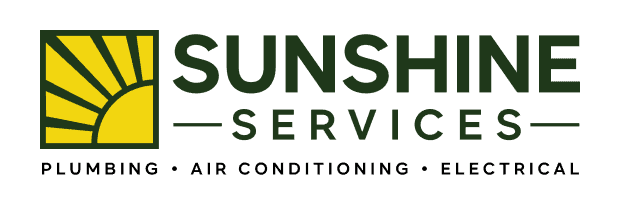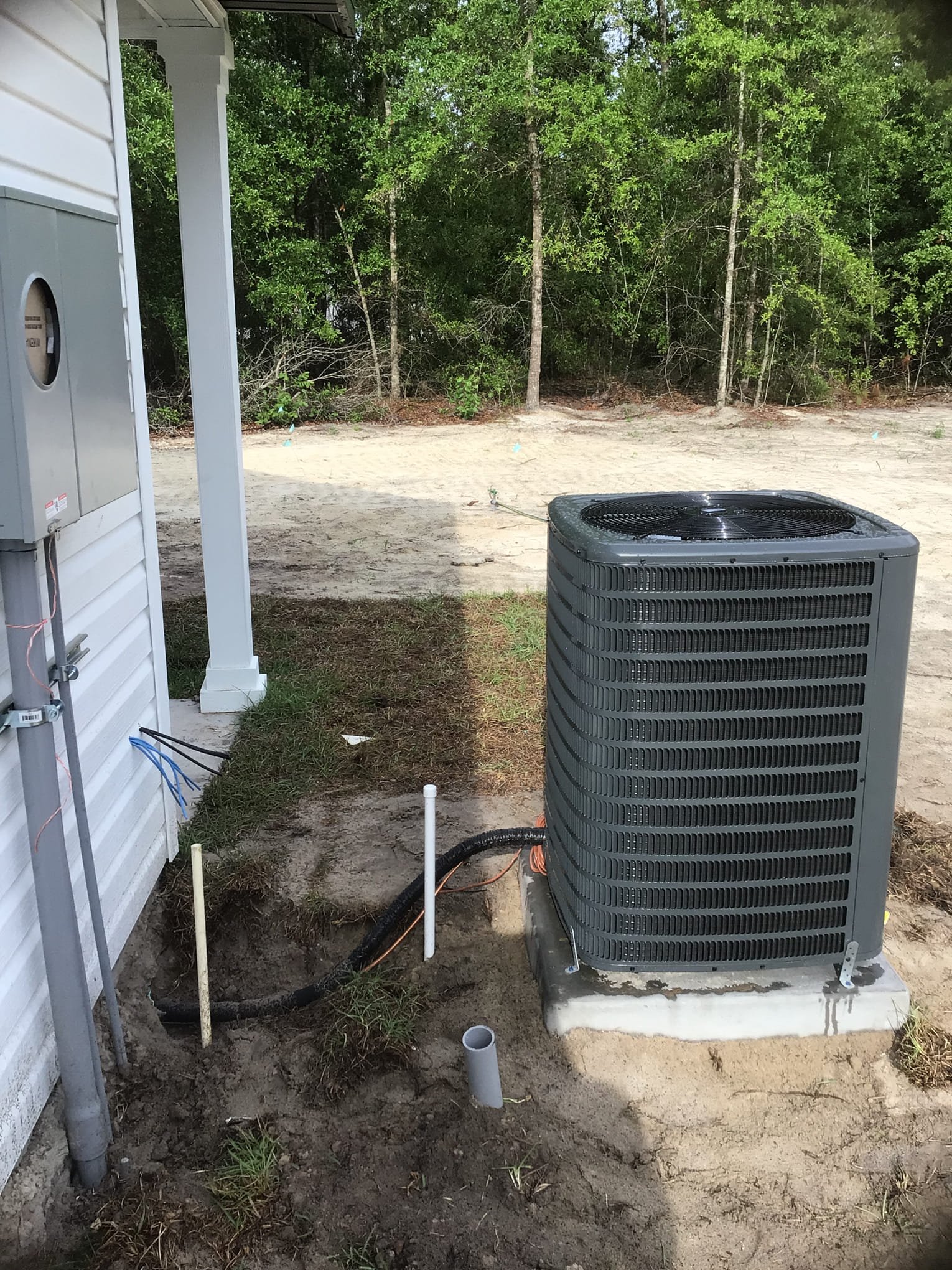


FREE Water Heater
With every whole house repipe purchase. Free brand-new water heater or credit towards a tankless water heater.
.svg)
.svg)
.svg)
.svg)



With every whole house repipe purchase. Free brand-new water heater or credit towards a tankless water heater.
.svg)
.svg)
.svg)
.svg)

Your home cooling system works hard all summer long, and like any hardworking machine, it needs regular care to keep running smoothly. Home cooling service includes routine maintenance, repairs, and system tune-ups that help your AC run efficiently and last longer while keeping your energy bills under control.
October offers the perfect window for cooling system service since the summer heat has passed but you still have time to fix any problems before next year. Many homeowners skip this important step and end up paying more later when their system breaks down during the hottest days of the year.
Professional cooling service covers everything from basic filter changes and coil cleaning to checking refrigerant levels and testing system performance. In this article, you’ll learn what a home cooling service includes, how much it costs in October, and how to prepare your AC system for next season.
Here’s what you need to know.
Keep reading! Understanding what to expect from service calls, how much they typically cost, and what simple checks you can do yourself will help you make smart decisions about keeping your home comfortable year-round.
October offers the ideal window for HVAC maintenance with reduced service demand and moderate temperatures. This timing provides homeowners with better scheduling flexibility and more accurate system diagnostics before winter heating needs begin.
HVAC companies experience significantly lower demand in October compared to peak heating season. Most homeowners wait until their systems break down in December or January before calling for service.
This reduced demand creates several advantages:
Scheduling benefits:
Cost advantages:
Contractors can dedicate proper attention to each system during October visits. They perform more comprehensive tune-ups rather than rushed emergency repairs common during winter months.
October's moderate temperatures create optimal conditions for HVAC system testing and maintenance. Technicians can safely operate heating equipment without overheating homes or creating uncomfortable indoor conditions.
Temperature benefits include:
The transition period allows technicians to test both cooling and heating functions. They can verify the system switches properly between modes and identify any issues with the changeover process.
Mild outdoor temperatures also prevent weather-related delays. Technicians avoid extreme cold that makes outdoor unit maintenance difficult or dangerous heat that creates unsafe working conditions.
Small problems discovered in October can be resolved before they become major failures during heavy winter use. Systems that seem fine may have developing issues that worsen under continuous heating demands.
Common October discoveries:
Addressing these issues in October prevents middle-of-winter breakdowns when repair costs increase and wait times extend. Emergency service calls during heating season often cost 50-100% more than scheduled maintenance visits.
Parts availability improves significantly in October. Common components stay in stock at local suppliers, while winter shortages often require special orders with multi-day delays.
Simple troubleshooting steps can save time and money before calling a technician. Three main areas require attention: electrical components, outdoor airflow, and system performance issues.
By routinely replacing or cleaning air filters, homeowners can lower their air conditioner’s energy consumption by 5% to 15%, according to the U.S. Department of Energy.
Check the thermostat settings first. Make sure it's set to "cool" mode and the temperature is lower than the current room temperature. Replace the batteries if the display looks dim or blank.
Locate your home's electrical panel. Look for any tripped breakers that control the air conditioning system. Flipped breakers will be in the middle position or opposite from other switches.
Reset tripped breakers by pushing them fully to the "off" position first, then back to "on." Wait five minutes before testing the system again.
Find your air filter location. Most filters sit in the return air duct or inside the indoor unit. Pull out the filter and hold it up to the light.
Replace filters that block light or appear gray and dusty. A clogged filter stops airflow and makes the system work harder. Write down the filter size printed on the frame for future purchases.
Walk around your outdoor condenser unit. Remove leaves, grass clippings, and branches within two feet of all sides. The unit needs clear space to pull in air properly.
Check for bent or damaged fins. These thin metal pieces should stand straight up. Gently straighten minor bends with a butter knife, but avoid forcing severely damaged sections.
Look at the top of the unit. Remove any debris from the fan area, but don't touch the fan blades directly. Turn off power at the breaker before cleaning.
Trim nearby plants and bushes. Shrubs should stay at least two feet away from the unit. Overgrown vegetation blocks airflow and reduces cooling efficiency.
Inspect the concrete pad. The unit should sit level without tilting. Small amounts of settling are normal, but major shifts may need professional attention.
Listen for unusual sounds when the system runs. Write down grinding, squealing, or banging noises. Note when these sounds occur during the cooling cycle.
Check each room's temperature. Some rooms may feel warmer due to sun exposure, but major differences suggest airflow problems or ductwork issues.
Smell the air coming from vents. Musty odors may indicate mold growth, while burning smells could signal electrical problems. Sweet smells might mean refrigerant leaks.
Test all vents in the house. Place your hand over each vent to feel airflow strength. Weak airflow from multiple vents suggests filter or ductwork problems.
Record when problems started. Note if issues began suddenly or developed gradually. This information helps technicians diagnose problems faster during service calls.
A proper home cooling service involves three main areas of focus. Technicians should perform a complete system inspection with cleaning, test all electrical and refrigerant components, and provide clear documentation of their findings.
The technician should examine every part of the AC system during the service visit. This includes checking the air filter for dirt and debris that can block airflow.
Key inspection points include:
Dirty coils reduce cooling efficiency and force the system to work harder. The technician should clean both the indoor evaporator coil and outdoor condenser coil using specialized tools and cleaning solutions.
The condensate drain line removes moisture from the system. Over time, this line can clog with algae, dirt, and debris. A thorough drain line flush prevents water backup that could damage the home or create humidity problems.
Electrical components need regular testing to ensure safe operation. The technician should check all electrical connections, measure voltage levels, and test the compressor and fan motors.
Refrigerant levels must be exact for proper cooling. Too little refrigerant means poor cooling performance. Too much refrigerant can damage the compressor.
Temperature split testing measures:
A proper temperature split usually ranges from 15 to 22 degrees. Numbers outside this range indicate potential problems with airflow, refrigerant levels, or system components.
The service should include a detailed written report showing what the technician found. This report should use simple language that homeowners can understand.
Photos help document any problems or wear on system components. Visual evidence makes it easier for homeowners to understand repair recommendations.
The report should list any immediate safety concerns first. Next, it should outline recommended repairs or maintenance items. Each recommendation should include a clear explanation of why the work is needed and what happens if it gets delayed.
Most homeowners spend $70 to $350 for basic air conditioning service, while annual maintenance plans range from $120 to $500. The final cost depends on your system's age, the work needed, and your home's size.
Implementing a preventive HVAC maintenance program can yield 8% to 12% energy savings, as outlined in DOE’s operations and maintenance guidance.
A basic AC tune-up costs $70 to $200 during spring or fall months. This includes cleaning, filter changes, and safety checks.
Service calls for repairs cost $75 to $200 just to diagnose the problem. The actual repair work costs extra.
Annual maintenance plans offer better value:
Single maintenance visits typically run $100 to $350. The price varies based on system complexity and local labor rates.
Most HVAC companies charge less during shoulder seasons when demand drops. Scheduling service in April, May, September, or October often saves 10-20% compared to peak summer rates.
System age impacts costs significantly. Units over 10 years old need more time and often require parts.
Access issues increase labor time:
Parts needed vary by system condition:
Time on site affects labor charges. Simple tune-ups take 1-2 hours. Complex repairs can take 4-8 hours.
Geographic location matters too. Urban areas typically cost 20-30% more than rural locations due to higher labor rates and business overhead.
A 2000 sq ft home typically needs a 3-4 ton AC unit. Annual cooling costs range from $300 to $1200 depending on climate and efficiency.
Monthly summer bills often include:
Money-saving strategies:
Regular maintenance reduces operating costs by 10-15%. Clean systems work more efficiently and break down less often.
Smart thermostats can cut cooling costs by $50 to $150 annually. They learn your schedule and adjust temperatures automatically.
Proper insulation makes the biggest difference. Well-insulated homes use 30-50% less energy for cooling than poorly insulated ones.
A steady, reliable cooling system depends on choosing the right service provider. Quality residential AC services offer transparent pricing, quick response times, and skilled technicians who handle everything from routine maintenance to emergency repairs.
Professional residential AC services should provide comprehensive solutions for your home's cooling needs. Quality providers handle both new installations and repairs with trained technicians who understand different system types.
Installation Services Include:
AC air conditioner installation requires precise measurements and knowledge of local building codes. Good technicians will assess your home's layout and recommend the right system size.
Ongoing Service Options:
Many companies offer service plans that include regular tune-ups. These plans help prevent breakdowns and keep your system running efficiently all summer long.
The right questions help you identify trustworthy AC repair services before you need emergency help. Ask these key questions when evaluating potential providers.
Licensing and Insurance Questions:
Service Capability Questions:
Cool AC repair companies should answer these questions clearly. They should also explain their diagnostic process and repair timeline.
Pricing and Warranty Questions:
Reliable providers give upfront pricing and stand behind their work with solid warranties.
Professional HVAC companies offer transparent scheduling and pricing without hidden fees or long wait times. The best providers can often accommodate same-week service calls for urgent cooling needs.
Clear Pricing Features:
Quality companies provide detailed quotes that break down labor and parts costs. They explain what work needs to be done and why.
Fast Scheduling Benefits:
Many providers now offer digital scheduling tools that let you book appointments quickly. Emergency services ensure you get help when your AC fails during hot weather.
The best residential AC services combine quick response times with skilled technicians who arrive prepared with common parts and tools.
Regular home cooling service keeps air conditioning systems running smoothly. Professional maintenance prevents small problems from becoming expensive repairs.
Homeowners save money through improved energy efficiency when their systems receive proper care. Clean filters and well-maintained parts use less electricity to cool homes.
Professional technicians have the right tools and knowledge to service cooling systems safely. They can spot potential issues before they cause system failures.
Most cooling systems need service twice per year for best performance. Spring tune-ups prepare units for summer heat, while fall maintenance gets them ready for storage.
Preventive maintenance costs less than emergency repairs. A small investment in regular service protects against major system breakdowns during hot weather.
Quality service providers offer different maintenance plans to fit various budgets and needs. Some include priority scheduling and discounts on repairs.
Proper cooling service ensures homes stay comfortable when outdoor temperatures rise. Well-maintained systems provide reliable cooling throughout the hottest months of the year.
Homeowners who skip regular maintenance often face higher repair costs and shorter equipment life. Professional cooling service protects this important home investment.
Book your October home cooling service today to secure lower rates and avoid costly surprises next summer.